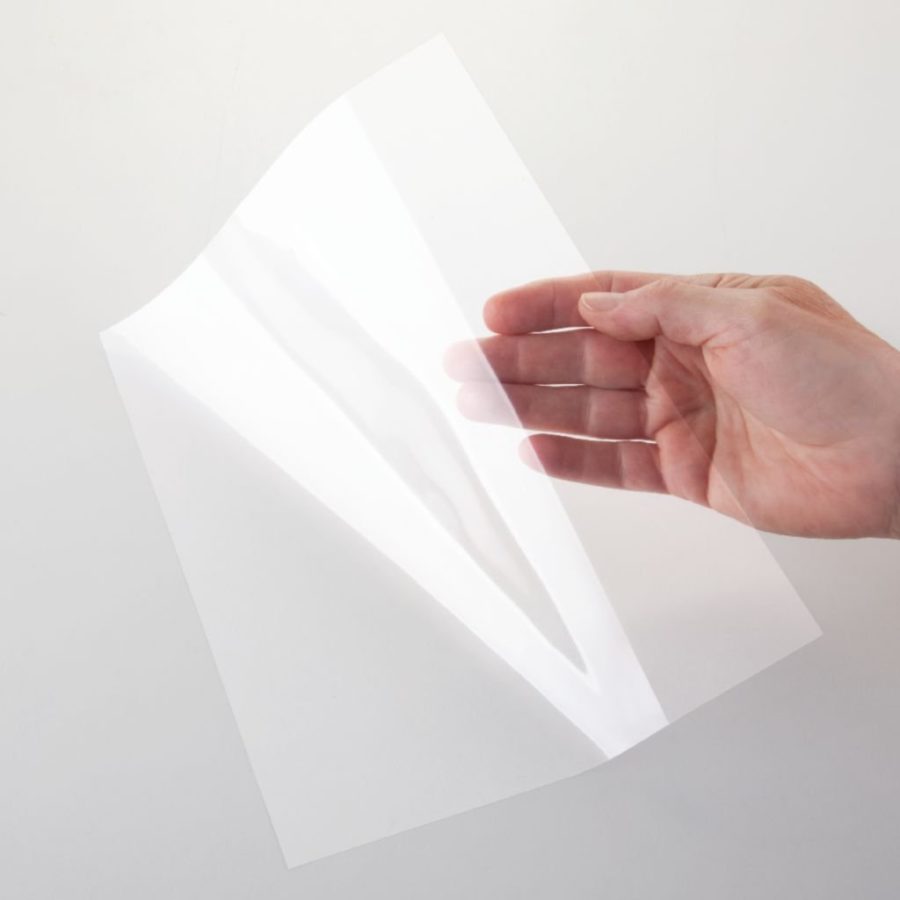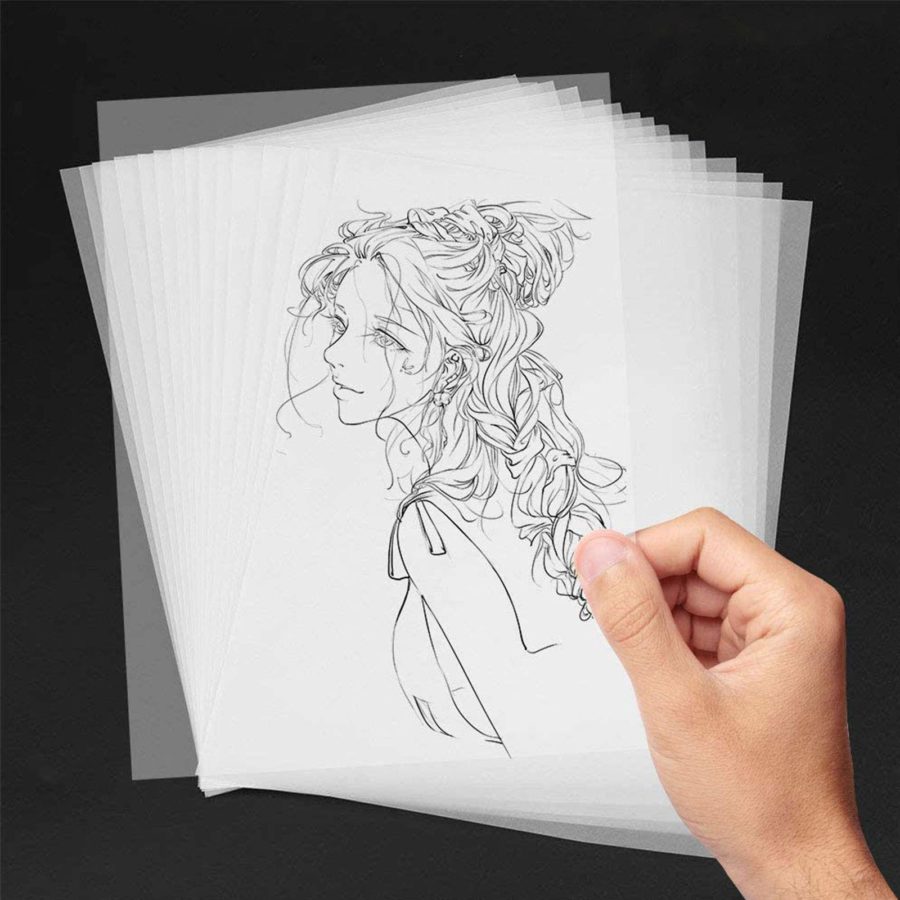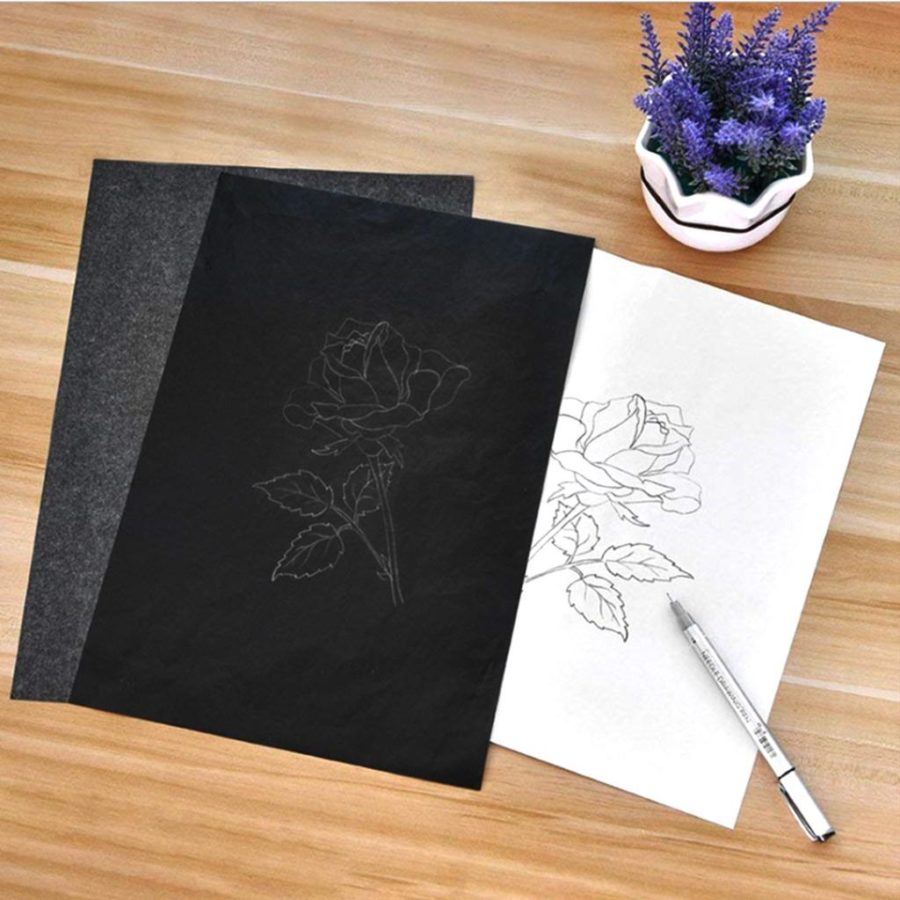Transfer papers are thin and low opacity papers that are widely used for tracing and transferring images. They originated in the mid-19th century and were primarily made from cotton rags. After some time, transfer papers became much cheaper and more sophisticated than they used to be and manufacturers started producing them from a wooden sulphite pulp.
Today, they are mostly used by mapmakers, engineers, architects and artists, but they’re also widely used by hobbyists for creating arts and crafts. The perfected transfer papers we have today are more versatile. They come in several materials and can be used for different purposes.
Acetate Paper
Acetate paper is a sturdy material made by reacting cellulose with acetic acid. This mildew-proof non-flammable material is popular among children, but also among many hobbyists. What’s more, acetate transfer paper is easy to use and lets you create unique artwork. Some of the uses of acetate paper are:
- Overlays or windows in greeting cards and scrapbooks;
- Book covers for business and school reports. They protect the reports from fingerprints and scratches, and keep the pages straight and organized;
- Photo covers in a frame or a photo album;
- Stencils for dry etching;
- Monoprinting;
- Scale modelling;
- Mask making.

Dry etching and monoprinting with acetate paper can be a fun creative activity. You can frame and hang these prints on your living room walls using them as décor. Your friends will be surprised to hear that they’re a product of your own creativity. These are also very simple techniques. All you need is a piece of damp paper, watercolour paints or water-based ink and a piece of acetate paper. To make a stencil for dry etching, use a sharp metal tool to scratch the acetate sheet’s surface, creating lines and textures.
Transparent Tracing Paper
Architects and other civil engineers usually use transparent tracing papers for creating blueprints. However, many beginner artists also find them helpful in improving their drawing techniques. Different forms of artwork such as watercolour painting, calligraphy, sculpting, drawing etc. require mastering of different techniques. Tracing photos using trace paper allows beginners to better familiarize themselves with the human anatomy and proportions of everyday objects.

Professional artists use tracing paper as well. Many people think of it as cheating, but the reality is different. These artists have already honed their drawing skills and they’re often required to create new art quickly. While they’re capable of drawing the contours accurately, tracing only serves to speed up the process.
How to Use Transparent Tracing Paper?
Tracing with transparent transfer paper is pretty straightforward. However, there are a few rules you need to follow to get the ideal result. Firstly, note that the traced image will be a flipped version of the original image you’re using.
To start, tape a photocopy of the original image to a hardboard panel using masking tape. Alternatively, you can tape it to your desk, but using a hardboard allows you to move it around as you trace. This way it’s more convenient to go over some tricky lines. Make sure it’s properly secured and there are no wrinkles that could distort your image. Tape a piece of tracing paper over it and start tracing it using a pencil. Go over the basic shapes and leave out the shading and unimportant details that can be added later. You can use a graphite pencil, but also a black coloured pencil. The latter is slightly better since it doesn’t smudge as much and it blends in better with paints.
When you’re done, tape the tracing paper over your desired surface, whether it’s paper, canvas, wood or other material. Make sure it’s taped with the pencil side down and trace the image again using a pen. The transferred outline is often faint, so you can go over it again before you continue working on your drawing.
Graphite Transfer Paper
Graphite paper works in a similar way to tracing paper. Graphite paper is a quick and easy way to transfer images by hand, and it’s far simpler than the traditional tracing paper method. However, it can sometimes leave behind graphite residue, especially if you’re not careful. This is a great helping tool if you want to save time on your artwork, or if you’re practising painting and need a ready outline to paint over. It’s also economical, as you can use a single sheet multiple times before the graphite wears out.

In the old days, people used carbon paper, especially for record-keeping purposes. This works in the same way as graphite paper. The difference between these two is that carbon paper leaves a lot of residues behind, and it’s coated with wax, which makes your copy difficult to erase.
How To Use Graphite Paper?
You can easily transfer a reference photo by taping a blank paper onto your desk or a hardboard panel, followed by a piece of graphite paper and a photocopy of the reference image on top. Just as you would do with the tracing paper, make sure every layer is taped securely in place to avoid distortions in your copy.
Make sure to apply enough pressure with your pen and frequently lift the first two layers to check the copy. Leave one side taped down at all times, which will act as a hinge – this way you’ll avoid displacing the image on top. Applying too much pressure will result in dark lines that can be easily smudged, and if you press too lightly the image won’t transfer well. Wash your hands right after you finish transferring the image to avoid leaving smudgy fingerprints on the paper or canvas you’re using.
If you’re not painting or drawing over the trace immediately after you finish, make sure you place it somewhere safe where nothing will rub against it. Don’t allow dust to settle over it, as wiping or brushing it off can result in smudging as well.
Conclusion
Transfer papers are handy tools used by professionals, but also by art enthusiasts. Graphite and trace papers speed up the drawing process. Which one you choose depends on the situation and your personal preference. Acetate papers, on the other hand, are strong and versatile. You can use them for dry etching or monoprinting in the comfort of your home.



